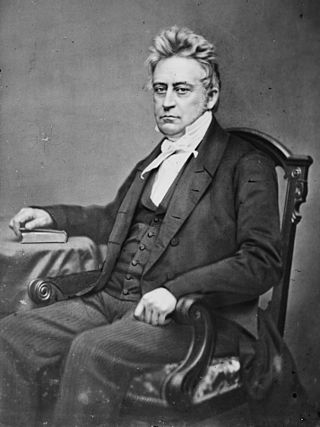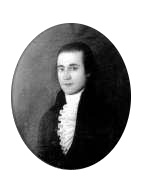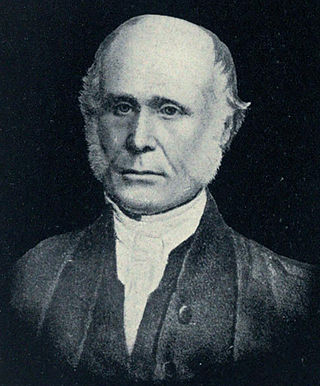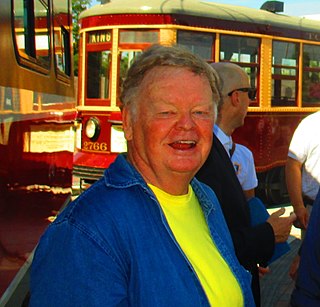Related Research Articles

William Lyon Mackenzie was a Scottish Canadian-American journalist and politician. He founded newspapers critical of the Family Compact, a term used to identify elite members of Upper Canada. He represented York County in the Legislative Assembly of Upper Canada and aligned with Reformers. He led the rebels in the Upper Canada Rebellion; after its defeat, he unsuccessfully rallied American support for an invasion of Upper Canada as part of the Patriot War. Although popular for criticising government officials, he failed to implement most of his policy objectives. He is one of the most recognizable Reformers of the early 19th century.

James FitzGibbon was a public servant, prominent freemason of the masonic lodge from 1822 to 1826, member of the Family Compact, and an Irish soldier in the British Army in Europe before and in the Canadas during the War of 1812 who received messages of warning from two Canadian folk heroes: Laura Secord (Ingersoll) and Billy Green.

John Strachan was a notable figure in Upper Canada, an "elite member" of the Family Compact, and the first Anglican Bishop of Toronto. He is best known as a political bishop who held many government positions and promoted education from common schools to helping to found the University of Toronto.
The Home District Council was the municipal governing body for York, Upper Canada from 1792 to 1849. It was established by Lieutenant Governor of Ontario John Graves Simcoe.
Christopher Alexander Hagerman, was a Canadian militia officer, lawyer, administrator, politician and judge.
William Allan, JP, was a Scottish Canadian banker, businessman and politician.

Marshall Spring Bidwell was a lawyer and political figure in Upper Canada.

James Macaulay M.D., J.P. was the Chief Medical Officer of Upper Canada; a landowner and Justice of the Peace for York, Upper Canada.

Barnabas Bidwell was an author, teacher and politician of the late 18th and early 19th centuries, active in Massachusetts and Upper Canada. Educated at Yale, he practised law in western Massachusetts and served as treasurer of Berkshire County. He served in the state legislature as representative and senator, as well as in the United States Congress as spokesman for the administration of Thomas Jefferson. He was effective in defending the administration's positions and passing important legislation. He resigned his seat in Congress in July 1807.

Robert Fleming Gourlay was a Scottish-Canadian writer, political reform activist, and agriculturalist.

Thomas Ridout was a political figure in Upper Canada.
James Edward Small, was a lawyer, judge and political figure in Upper Canada and Canada West.

Brock's Monument is a 56-metre (185 ft) column atop Queenston Heights in Queenston, Ontario, Canada, dedicated to Major General Sir Isaac Brock, one of Canada's heroes of the War of 1812. Brock, a British Army officer in charge of defending Upper Canada from a United States invasion, and one of his aides-de-camp, Lieutenant-Colonel John Macdonell, are interred at the monument's base on the heights above the battlefield where both fell during the Battle of Queenston Heights. The current monument was constructed between 1853 and 1856, which replaced an earlier Monument to Brock on the battlefield (1824–1840). Parks Canada maintains the monument, the most imposing feature of Queenston Heights National Historic Site. It is the fourth oldest war memorial in Canada.

The Discovery District is one of the commercial districts in Downtown Toronto, Ontario, Canada. It has a high concentration of hospitals and research institutions, particularly those related to biotechnology. The district is roughly bounded by Bloor Street on the north, Bay Street on the east, Dundas Street on the south, and Spadina Avenue on the west.

Colonel Sir James Buchanan Macaulay, CB was a lawyer and judge in colonial Canada.

Samuel Peters Jarvis was a Canadian government official in the nineteenth century. He was the Chief Superintendent for the Indian Department in Upper Canada (1837–1845), and he was a member of the Family Compact.

Sherbourne Street is a roadway in Downtown Toronto. It is one of the original streets in the old city of York, Upper Canada. It starts at Queen's quay, and heads north to South Drive. It is two lanes for its entire length, though the part south of Bloor has bike lanes.

Mike Filey was a Canadian historian, radio host, journalist and author. He was awarded the Jean Hibbert Memorial Award in 2009 for promoting the city of Toronto and its history.
The Types Riot was the destruction of William Lyon Mackenzie's printing press and movable type by members of the Family Compact on June 8, 1826, in York, Upper Canada. The Family Compact was the ruling elite of Upper Canada who appointed themselves to positions of power within the Upper Canadian government. Mackenzie created the Colonial Advocate newspaper and published editorials in the paper that accused the Family Compact of incompetence and profiteering on corrupt practices, offending the rioters. It is not known who planned the riot, although Samuel Jarvis, a government official, later claimed he organized the event. On the evening of June 8, 9–15 rioters forced their way into the newspaper offices and destroyed property. During the event, Mackenzie's employees tried to get passersby to help stop the rioters. Bystanders refused to help when they saw government officials like William Allan and Stephen Heward were watching the spectacle. When the rioters finished destroying the office, they took cases of type with them and threw them into the nearby bay.
References
- ↑ "mean streets". The Rational Post . 2005-06-05. Archived from the original on 2012-02-13. Retrieved 2019-03-27.
- ↑ "A MODEL CITY". Town of York Historical Society . Archived from the original on 2019-03-27. Retrieved 2019-03-27.
- ↑ William Renwick Riddell (July 1915). "The Duel in Early Upper Canada". Journal of the American Institute of Criminal Law and Criminology. 6 (2). Northwestern University: 165–176. doi:10.2307/1132814. JSTOR 1132814.
- ↑ Douglas Leighton, Robert J. Burns. "Jarvis, Samuel Peters, militia officer, office holder, and lawyer". Dictionary of Canadian Biography . Archived from the original on 2019-03-27. Retrieved 2019-03-27.
- 1 2 Raible, Chris (1992). Muddy York Mud: Scandal & Scurrility in Upper Canada. Toronto: Curiosity House. p. 70. ISBN 978-0-9696418-0-3.
- ↑ "Ridout, Thomas Gibbs, banker". Dictionary of Canadian Biography . Archived from the original on 2019-03-27. Retrieved 2019-03-27.
- 1 2 Adam Bunch (2013-02-05). "The infamous, bloody 1817 duel at the corner of Yonge & College". Spacing magazine . Archived from the original on 2019-03-27. Retrieved 2019-03-27.
- ↑ Raible, Chris (1992). Muddy York Mud: Scandal & Scurrility in Upper Canada. Toronto: Curiosity House. p. 72. ISBN 978-0-9696418-0-3.
- ↑ Raible, Chris (1992). Muddy York Mud: Scandal & Scurrility in Upper Canada. Toronto: Curiosity House. p. 73. ISBN 978-0-9696418-0-3.
- ↑ Raible, Chris (1992). Muddy York Mud: Scandal & Scurrility in Upper Canada. Toronto: Curiosity House. p. 74. ISBN 978-0-9696418-0-3.
- 1 2 Raible, Chris (1992). Muddy York Mud: Scandal & Scurrility in Upper Canada. Toronto: Curiosity House. pp. 74–75. ISBN 978-0-9696418-0-3.
- ↑ Hugh A. Halliday (2005-01-01). "Hand Me My Pistol, Please". Legion magazine . Archived from the original on 2019-03-27. Retrieved 2019-03-27.
- ↑ Mike Filey (2003). Toronto Sketches 7: The Way We Were. Dundurn Press. ISBN 1-55002-448-5.